
Earth’s Bright Future
Despite bleak environmental news, the UW’s Nelson Institute finds reasons to hope.
I have a theory: people tend to have a tepid response to environmentalism because articles about the environment are, almost invariably, gloomy.
Every day, we read that the climate is warming, the seas are rising, Australia is burning, pollution is spreading and increasingly toxic. According to a study published in Science in October, North America has lost three billion birds — about 29 percent of the avian population — in the last 50 years.
What am I supposed to do with that knowledge?
And yet Paul Robbins ’89 insists, “Our story is about hope.” Robbins is dean of the UW’s Nelson Institute for Environmental Studies, and he argues that negativity is the antithesis of environmental studies, at least at UW–Madison.
The Nelson Institute turns 50 this year. It was born, somewhat coincidentally, in 1970, the same year that its eponym, then-Senator Gaylord Nelson LLB’42, saw his proposal for an environmental holiday — Earth Day — come to fruition. It was an inspirational moment for environmentalism.
“I’m sort of a product of Earth Day,” says Jean Bahr, a recently retired professor of geoscience who worked in the Nelson Institute. “That was a seminal event in my life, because it inspired me to first help start a recycling center in my hometown and then to go to college with the idea of studying some sort of environmental science.”
But the ensuing decades have shown how complicated environmental science can be. “I think when we started out with the first Earth Day, the focus was really on visible pollution, air quality, contaminated water,” Bahr says. “I don’t think we recognized the scope of climate change.”
The Nelson Institute is an oddity on a college campus. Almost all of its faculty are cross-listed in other departments; it offers undergraduate degrees, but only as the second half of a double-major. Its founding director, Reid Bryson, is remembered today partly for his view on climate change: the world, he believed, was cooling.
Yet the Nelson Institute is also remarkable for its insistence on positivity, even though things so often look so bad. I talked to six current and former members of Nelson’s faculty to find out where their hope lives.
“There have been a lot of tragic and awful things that have happened in the 50 years since the first Earth Day,” says Robbins, “but there’s been a lot of problem-solving, too. We want to be about problem-solving. We want our students not to be depressed. We want them to be hopeful.”
Arthur Sacks: Education
One Angry Dude
Bryson, the founder of what would become the Nelson Institute, was not always an easy person to get along with.
“Reid was one of those brilliant scholars who thought he knew as much about your field — if not more — than you did, even though it wasn’t his field,” says Arthur Sacks MA’68, PhD’75, “and he let you know it all the time, which some people found irritating.”
And Sacks considered Bryson his mentor.
But if Bryson was irritating, he also made spectacular contributions. During the Second World War, he had helped to document the jet stream, and he was one of the few meteorologists to correctly predict the path of Typhoon Cobra in December 1944. (His forecasts were ignored, however, and the U.S. Third Fleet sailed into the typhoon, leading to ascending tragedies: three ships sank, many more were damaged, hundreds of sailors drowned, and Herman Wouk was inspired to write The Caine Mutiny.)
Bryson joined the UW faculty in 1948 and helped to found the meteorology department — in part, says Sacks, because of academic friction. “Reid was basically kicked out of geography,” he says.
In 1962, Bryson established the Center for Climatic Research, having determined that climate change put human society at risk. The change that Bryson thought was coming was a global cooling — he believed that human activity was driving so much dust and aerosolized matter into the atmosphere that it would reduce the amount of sunlight reaching the earth. Accumulated data did not support this prediction, but Bryson remained doubtful. He was skeptical that carbon dioxide had much impact on the global climate or that there was a political means of slowing the use of fossil fuels.
Still, in the 1960s, he decided that the university needed a department to study the environment.
“The institute’s genius was to realize that [science disciplines] are interconnected instead of breaking them up,” says Sacks. “That’s critical to advance our understanding of how the planet works. The goal was to look at how human and environmental systems work together, interacting positively and negatively, and how society could improve and help the environment rather than simply destroy it by digging holes and pumping oil.”
At its outset in 1970, the institute worked to draw from a variety of disciplines. By 1976, its staff included Sacks, who had received his graduate degrees in English studying obscure Jazz Age poet Maxwell Bodenheim. When Bryson retired in 1985, Sacks became the institute’s next director.
Sacks and other UW environmental studies faculty frequently advised governments on policy — not only the U.S. Environmental Protection Agency, but also organizations in the Soviet Union, Indonesia, India, China, Chile, and other countries.
“Through my own academic international environmental education work,” Sacks says, “as well as the institute’s very significant research, education, and outreach efforts, the institute became known globally as a leader in the environmental education arena.”
Leveraging that interdisciplinary outlook, the institute has grown from geography’s stepchild into an entity with its own standing. In 2002, it was named for Gaylord Nelson, whom Sacks had long admired and supported; in 2019, the Nelson Institute’s top position received a title change from director to dean, signaling that it was approaching equal status to the UW’s 11 constituent schools and colleges.
“Fifty years ago, this institute was, like, one angry dude. That’s what it was,” says Robbins, that angry dude’s successor. “I mean, he did great stuff. Never talk Reid down. But it was just one guy. Now it’s different.”
That growth in recognition is part of what gives Sacks hope — not just that the institute is seen as more important, but that environmental studies in general are a concern across all levels of education.
“What encourages me now is a resurgence of awareness among even young people about the importance of this, not only for themselves but for the future,” Sacks says. “The thing that gives me hope is the fact that environmental education at K–12 levels, at undergraduate levels, at graduate levels, has … created a new generation of people who see the value and the importance and critical nature of the study of the environment.”
Monica White: Gardens
The Environment Is Everywhere
Unlike most of his contemporaries, Nelson had an expansive view of what environmental studies should study. More than parks and bears and owls and whales and mountains and restored prairies, the environment is everywhere and everything. Factories and pollution are environmental issues, but so are golf courses and homes and playgrounds.
“The economy,” he argued, “is a wholly owned subsidiary of the environment.”
According to Robbins, this ethos runs throughout the Nelson Institute today. “We define the environment as anywhere that people live, work, and play,” he says.
And that means that environmental advocates have a bit of a problem. “Right now, the constituency for ‘the environment’ is way too narrow,” he says. “It comes from a wilderness tradition that is heavily white, older, middle class. If we don’t fix that, all of the other problems are not going to get fixed.”
The trouble with environmental arguments as often presented is that they come across as a luxury — preserving vacationlands for the affluent. Monica White knows that this is a mistake. Ignoring the concerns of the poor is a blind spot for environmentalists, and it’s potentially deadly for the poor.
White is an associate professor of community and environmental sociology in the College of Agricultural and Life Sciences, with half her appointment in the Nelson Institute. She has an office in Ag Hall, as well as one in Science Hall.
“The most interesting conversation I have with folks is helping them understand that being out in the environment doesn’t mean getting in your car and driving somewhere,” she says. “The environment is outside your door wherever you live, and it’s more encompassing than hiking trails and mountains. It’s also the built environment.”
White’s journey to environmental studies began in her native Detroit, where people turned to the land to counteract an urban desert. “Everybody in my family grew food,” she says. “My dad grew food. My grandmother was in a wheelchair, and she grew food indoors before it was popular.”
White’s interest is in environmental justice, a concept that leaps across a variety of traditional academic disciplines: sociology, political science, geography, economics, horticulture, and more.
“When we think broadly about the environment, the environment offers us resources,” White says. “There are some of us who use more resources than others and benefit from those resources, while the outcome or the residuals impact those communities that don’t have access. And so an environmental- justice framework recognizes that some receive more benefit and others more detriment.”
White’s focus is small-scale: looking in particular at food justice and how poorer communities can overcome being deprived of access to wholesome, healthful sustenance. But on a large scale, environmental justice lies at the heart of many global conflicts. Why is so much rain forest burning in Brazil? Because its president, Jair Bolsonaro, hopes to spark rapid economic growth and believes that first-world environmentalists are holding his country back. “It is a fallacy to say that the Amazon is the patrimony of humanity,” he said in a speech last year, meaning that the region belongs to Brazilians to exploit as they see fit; the rest of humanity may go climb a tree, if they can find one. And yet while the burning will aid farmers, it will damage the lives of the Amazon’s indigenous peoples. Preservation aids some communities and restricts others; exploitation benefits some communities to the detriment of others.
When it comes to hope, White looks not at the large scale but at the small: garden plots. When people dig in their own soil and grow their own food, they engage with the environment and find ways to be healthy.
“I am encouraged by children in gardens in places that were previously overrun by tall grass,” she says. “I am encouraged by seeing people reconnect with the agricultural environment, using the environment as a place and space to learn new strategies for resilience, resistance, and community health and wellness.”
Jean Bahr: Earth’s Resilience
All Wet
The Nelson Institute began its life in 1970, as the then-Nelson-less Institute for Environmental Studies. But the UW’s interest in studying the environment goes back much further, and in fact there are elements of the Nelson Institute that are older than the parent organization. One of these is Water Resources Management (WRM), a master of science program that began in 1965 out of discussions between political scientist Henry Hart MA’47, PhD’50 and civil engineering professor Arno Lenz ’28, MS’30, PhD’40. Like all of the UW’s environmental studies efforts, it’s cross-disciplinary, recognizing that addressing real-world problems involves drawing on expertise in a wide variety of fields.
Bahr, who led WRM from 1995 to 1999, is a geologist. Her office is in Weeks Hall. “There’s always been a strong connection between this department and Water Resources Management,” she says. “A large number of the master’s students I supervised in hydrogeology did double degrees with Water Resources Management. It was a perfect combination of research thesis plus the interdisciplinary practicum.”
Both in her role with WRM and after, Bahr was an advocate for one of the Nelson Institute’s chief goals: preparing grads to work outside of academia. WRM alumni go on to careers in state and federal government agencies and at nonprofit groups such as the River Alliance and Sierra Club. Bahr says that WRM’s program requires students to participate in “the workshop,” in which the entire class agrees to tackle a real-world problem, find a solution, and then implement it.
Students “often complain about the workshop while it’s going on. It’s hard to work with other people, and it’s hard to learn a common language of different disciplines and things,” says Bahr. “But then the alumni always say, ‘Oh, that was the best training that I could have gotten for what I’m doing for the rest of my life.’ Most water problems are things that involve the social dimensions and human dimensions.”
Bahr herself works to incorporate real-world solutions into her own life: hers was the first home in Madison to add grid-connected solar panels, meaning that she not only generates her own electricity, but also sells excess to Madison Gas and Electric. And in her academic work, she serves on the federal Nuclear Waste Technical Review Board, helping the nation try to work out how to manage spent nuclear fuel.
And energy use is, to Bahr, one of the world’s great environmental concerns. “It’s the people who use the energy who are causing climate change and putting pressure on all of our natural resources,” she says. “That affects ecosystems and biodiversity. I can get really pessimistic.”
But her study of geology gives her hope. “Our planet is actually quite resilient,” she says. “And geology gives me an appreciation of the longevity of our planet and the evolution of our planet over time. Our species may not survive, but the planet will.”
Holly Gibbs: Investment Banks
SAGE Advice
“Wait, can I change my answer?” says Holly Gibbs PhD’08, a professor of geography at the Nelson Institute’s Center for Sustainability and the Global Environment (SAGE). “Go back. Students. I should have said our students give me hope. Or maybe the children?”
But my no-backsies policy is strict. Besides, other faculty talk about children and students. I’m intrigued by what she says about economics.
It’s raining outside Gibbs’s office in the UW’s Enzyme Research Institute, and in Brazil the rainforests are burning, but her mood is light. “It’s tricky talking about hope,” she says, but things are not quite as bad as they look.
Gibbs is not at the Enzyme Research Institute because she studies enzymes. Her lab is there because the building has space for her and for SAGE. Though the Nelson Institute’s official home is in Science Hall, that ancient building has only so much space, and it has to share with the Department of Geography and the State Cartographer’s Office and the Robinson Map Library. So SAGE holes up nearly a mile away on the southwest side of campus, in a building it shares with the Research Animal Resources Center and, of course, the Institute for Enzyme Research.
SAGE was founded in 2002 by Jonathan Foley ’90, PhD’93 with the purpose of looking at the interconnections between resources, technology, public policy, health, security, and the environment. “Jon was part of another research group that was focused on the nitty-gritty of atmospheric science, but he wanted to do the interdisciplinary work that would change the world,” Gibbs says. “In SAGE, one of the things that brings us together is trying to conduct what I would call science that matters.”
Gibbs has been busy in recent years. Her par- ticular area of research includes land use in the Brazilian Amazon.
“We’ve been targeting these corporate promises, where companies have made public promises and sometimes legal contracts to stop buying from farmers that have cleared forest,” she says. “They’re trying to have deforestation-free supply chains, and we’ve spent a lot of time trying to understand what is happening on the ground.”
And what’s happening on the ground is not entirely good. Brazil’s president Bolsonaro has not only allowed but encouraged deforestation. According to Gibbs, he has even told agriculturalists that if trespassers come on their land and try to stop deforestation, they may shoot them without repercussion, making research dangerous.
“It’s so unsafe now that it’s even difficult for us to feel comfortable hiring a local Brazilian to go out and lead field research,” she says. “We’ve put that part of our work on hold under this new political context.”
But at the same time, the situation offers a ray of hope: “Investment bankers,” says Gibbs. “Investment bankers give me hope.”
This is, she admits, a simplification. But she believes that, increasingly, the global financial sector is seeing the risks of environmental damage and climate change. And where money flows, change happens.
“By working with so many different companies,” she says, “from the retailers to the commodity buyers to the investment banks, you start to feel this sense that, well, there’s enough good people, there’s enough concerned citizens, that by bringing us together, we could start to solve huge problems.”
Gregg Mitman: People
Beyond the Land Ethic
Land, says Gregg Mitman MA’84, PhD’88, is a hot topic.
“As much as climate is an issue, a major environmental issue,” he says, “land is a huge issue, and we’re seeing questions around land — who has access to it and who owns it — asked in a way that is quite different from an earlier land ethic, which became such a touchstone for Wisconsin.”
The land ethic was a concept put forward by Aldo Leopold, the UW professor and author whose philosophy dominated 20th-century conservation movements. Robbins considers Leopold, John Muir x1863, and Nelson to be the “holy trinity” of Wisconsin environmental thought.
Leopold wrote that the land ethic “enlarges the boundaries of the community to include soils, waters, plants, and animals, or collectively: the land. … [It] changes the role of Homo sapiens from conqueror of the land-community to plain member and citizen of it. It implies respect for his fellow-members, and also respect for the community as such.”
Mitman, whose field is history of science, led the Nelson Institute as interim director for four years leading up to Robbins’s arrival. His office is in the Medical Sciences Center. He sees environmental studies growing beyond the land ethic to consider not just how the human species is part of the land community, but how land has been shaped by histories of racism and violence that have led to inequitable environmental burdens.
“If you look at the places that will be most affected [by climate change] — say, Africa,” he says, “it’s a continent that has contributed the least in CO2 emissions. There’s a real inequity there in terms of the burdens that people will bear, in relationship to their involvement in producing the problem.”
For instance, Mitman worked with Emmanuel Urey MS’13, PhD’18 to produce a documentary and website called The Land beneath Our Feet about history, memory, and rights in Liberia. The film played a part in the passage of Liberia’s Land Rights Act in 2018, which recognizes indigenous people’s customary rights.
In Liberia, multinational corporations control between a quarter and half of all public land and use it for plantations to produce raw materials such as palm oil. People are displaced in the process, losing access to land that may have been held in common for generations.
“Liberia is very much an agricultural nation,” says Mitman. “Many people live by subsistence agriculture and have a west-African understanding of land, where it belongs to a community, which is custodian of the land. Private property, individual ownership of land, is an alien concept that runs counter to customary rights. These [corporate] concessions really deprive people of their livelihood by taking away access to land that was once held in common.”
The film project, Mitman says, flows from the tradition created by the UW’s Land Tenure Center, which began in the College of Agricultural and Life Sciences in 1962, before the creation of the Nelson Institute. It was folded into Nelson in 2003, though it’s “now pretty much defunct,” Mitman notes. “But when I travel, people know the Land Tenure Center. A lot of the people that were working as consultants on land reform in Liberia had some connection to the Land Tenure Center at Wisconsin.”
For Mitman, hope flows from those same people — people like Urey, who refuse to give in to despair.
“[Urey’s] village was taken over by rebels when he was a young boy,” Mitman says. “He first learned to read and write at the age of 14. But he found his way to the Nelson Institute and got his PhD. He’s now helping to build a school and sustainable agriculture to support that school. That kind of resilience of the human spirit gives me a lot of hope.”
Paul Robbins: Ingenuity
The Modernist
Environmental studies are global: they look at sea levels, planetwide temperatures, atmospheric gasses, continental bird populations, and so on. But they are also local. Among the Nelson programs that Robbins is most proud of is the Wisconsin Initiative on Climate Change Impacts (WICCI), even though it was developed before his arrival in 2012.
“It comes from an encounter with a state legislator who said, ‘Okay, I believe you, climate change is real. Why does my constituency care? Why do I care? The people who vote for me, why do they care?’ That was a good question,” Robbins says. “That’s a good Wisconsin Idea question.”
WICCI launched in 2007 in a partnership between the Nelson Institute and Wisconsin’s Department of Natural Resources, and it considers the ways in which climate change will affect the state: agriculture, fisheries, forests, health, and more. It looks at not just how the climate is changing, but how that change will affect local communities and what those communities can do about it.
Climate is the top concern for Robbins, as it was for every Nelson faculty member I spoke with. “Catastrophic climate change and the collapse of global biodiversity: that’s the story,” Robbins says. “There’s no going back is what we say around here. I mean, minimally, you’re talking about a degree and a half. That’s a fundamentally altered planet.”
But doom is not inevitable. We may not go back, but we might adapt. WICCI has an adaptation working group to help develop strategies so that Wisconsin can prepare for a warmer world.
“I don’t think [restoration] is a good word. I think we should be calling it ecological design,” says Robbins. “People act on the land or they don’t act on the land. You either put your hands on it to change it, or you put your hands on it to keep it from changing. Those are your choices. That’s what they are.”
Robbins can put his hands on a piece of environmental inspiration anytime he wants. In his Science Hall office sits Nelson’s desk — the one on which he worked out proposals for Earth Day. But Robbins doesn’t use it as a desk. It sits in a corner far from the windows: a museum piece or holy relic.
Robbins sees the threats that his fellow environmental scientists have forecast for the world, and he knows that not all of them have come to pass: humans can, when pressed, make changes that ameliorate environmental damage.
“Systems have thresholds and tipping points,” he says. “And we talk about tipping points as all bad, right? So enough biodiversity collapses that the oceans die, and then we all die. That would be bad. But there are tipping points for other systems, too. Urbanization is a classic example.”
A few decades ago, the human population was rising so fast that environmentalists feared that resources would be used up, leading to conflict and devastation. But urbanization, coupled with women’s education, rights, and labor force participation, led to a rapid decline in birth rates.
“[Now] half the world is under the replacement rate for population,” Robbins says. “We think of overpopulation, but the truth is half the countries in the world are shrinking. … If you had told me 40 years ago, 30 years ago, that that would happen and it would happen within two generations, I would have said that was a fairly optimistic prediction.”
And this is what gives Robbins hope: the human ability to adapt and change. Smaller rural populations, for instance, have allowed forests to return in many parts of Latin America and Asia. In Wisconsin, Robbins notes, there is more forested land than at any time in the last century, even after years of brutal deforestation by European settlers. Technology has made solar energy much cheaper today than it was a decade ago. And though the world still burns a lot of natural gas, it’s an improvement on coal, which was itself an improvement on previous energy sources. “Remember,” he says, “we used to burn whale oil.”
So human ingenuity gives Robbins hope. “We get better at things all the time,” he says. “My inner modernist is still alive. There’s still some part of me that clings to modernity, to progress.”
John Allen is associate publisher of On Wisconsin magazine. He regrets using so much paper to draft this article.
Published in the Spring 2020 issue
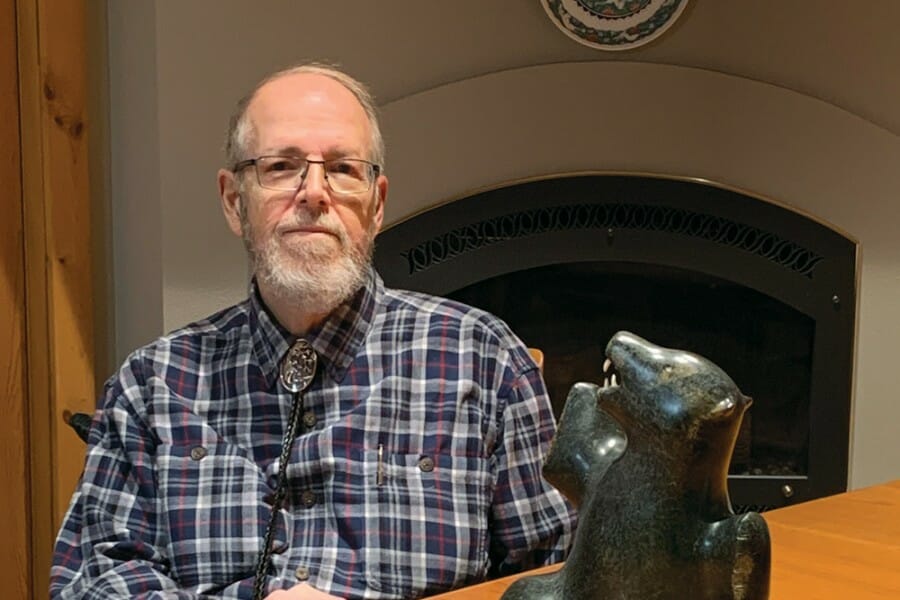
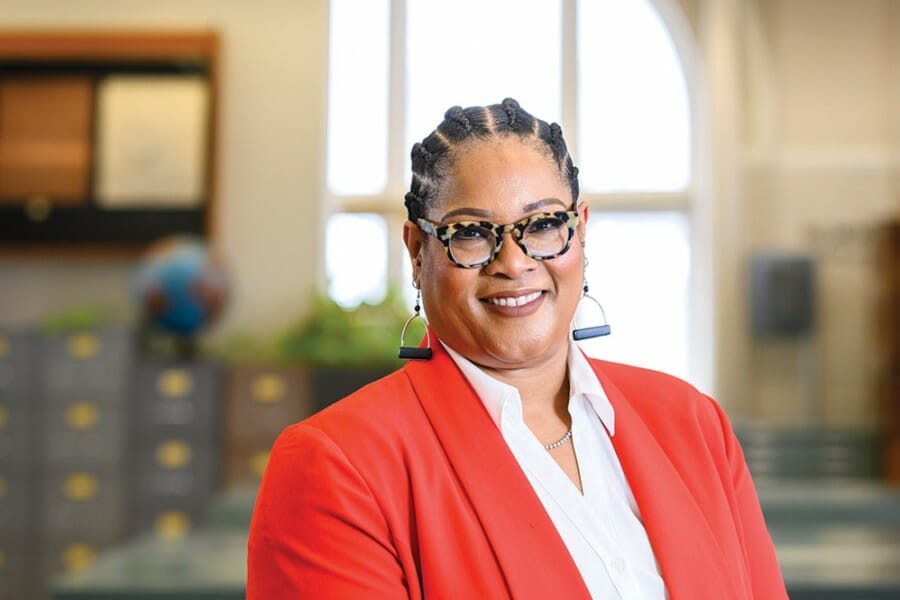
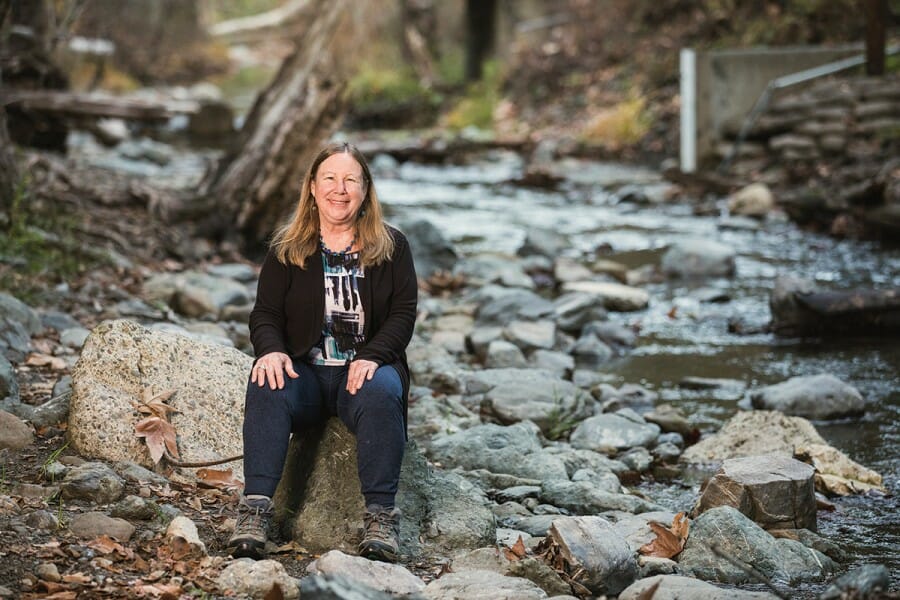
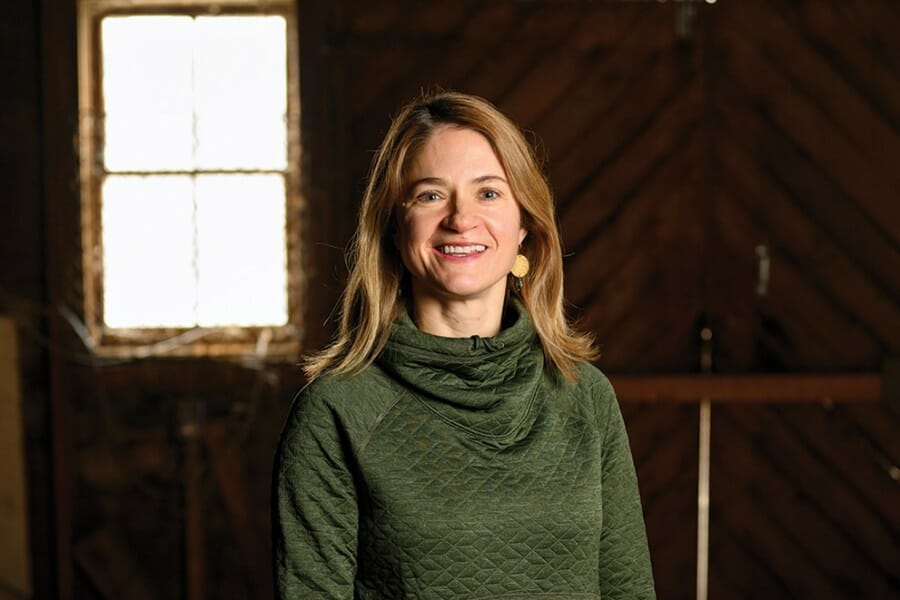
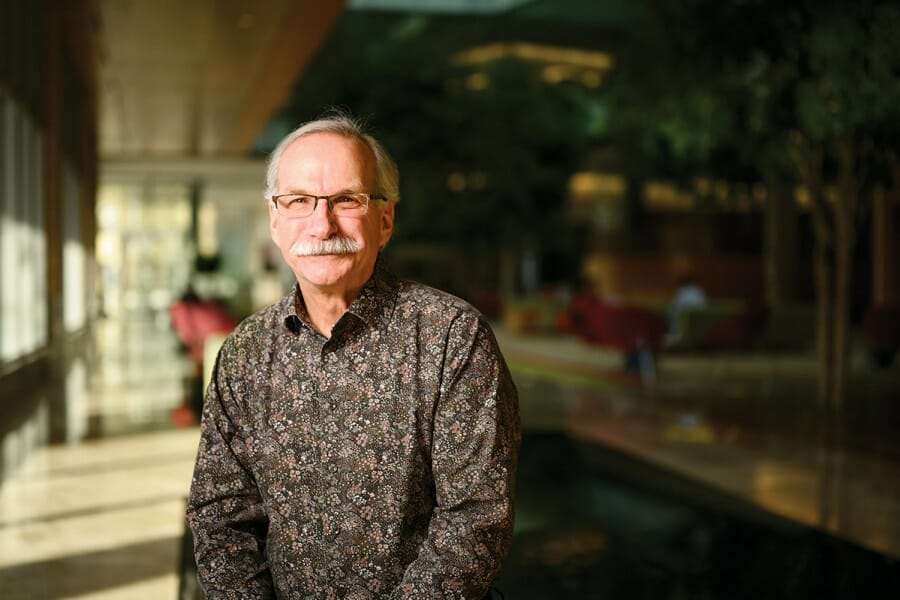
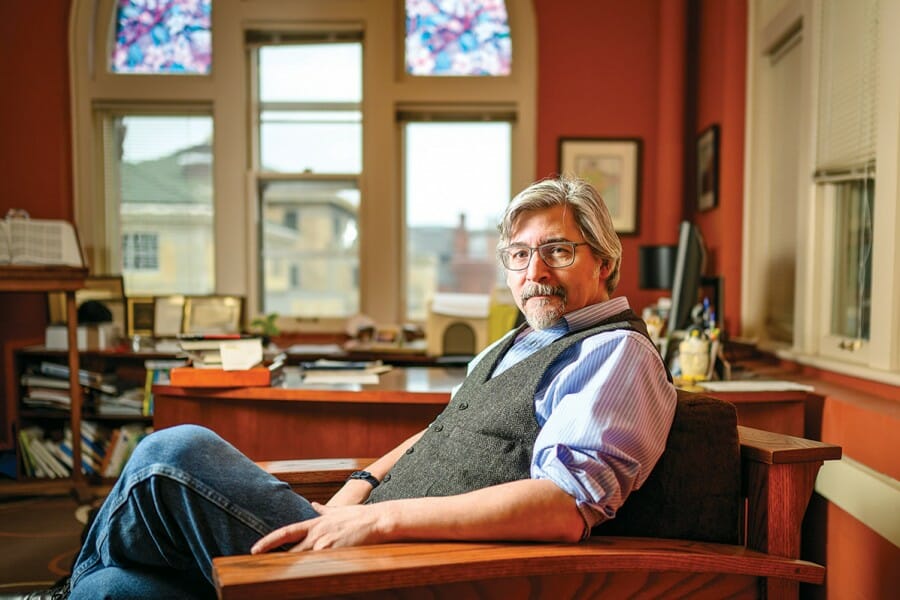
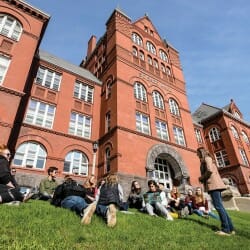
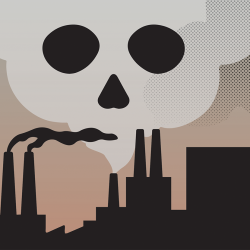

Comments
No comments posted yet.